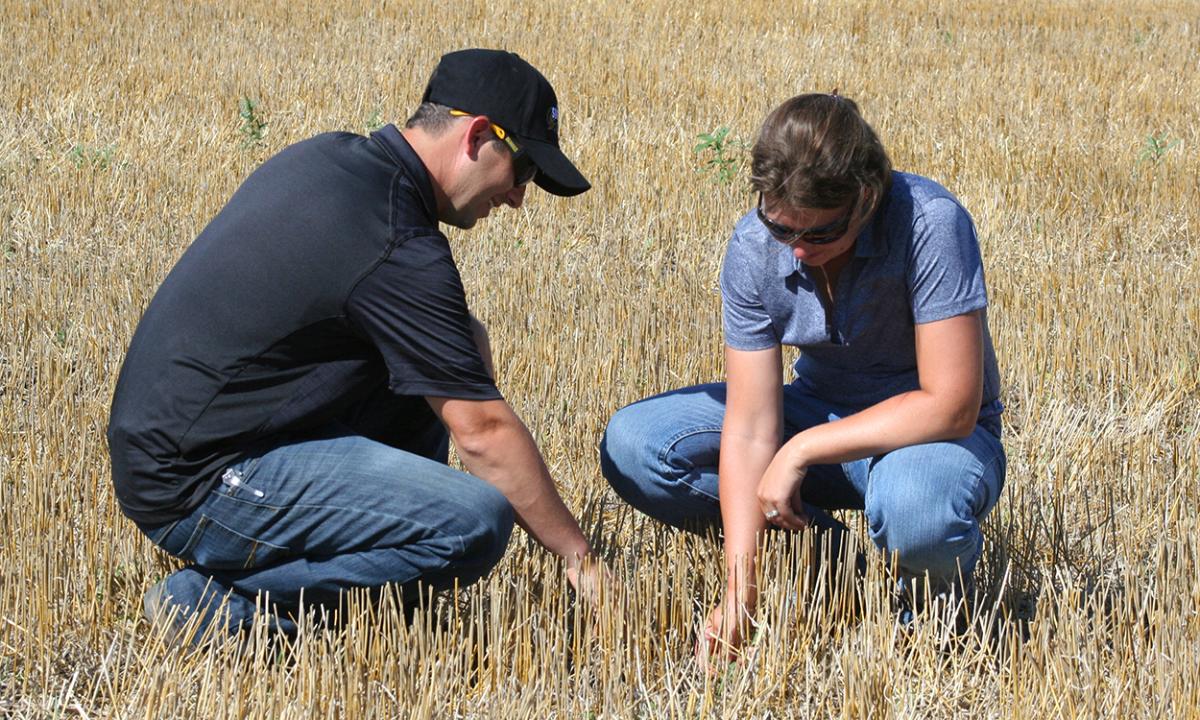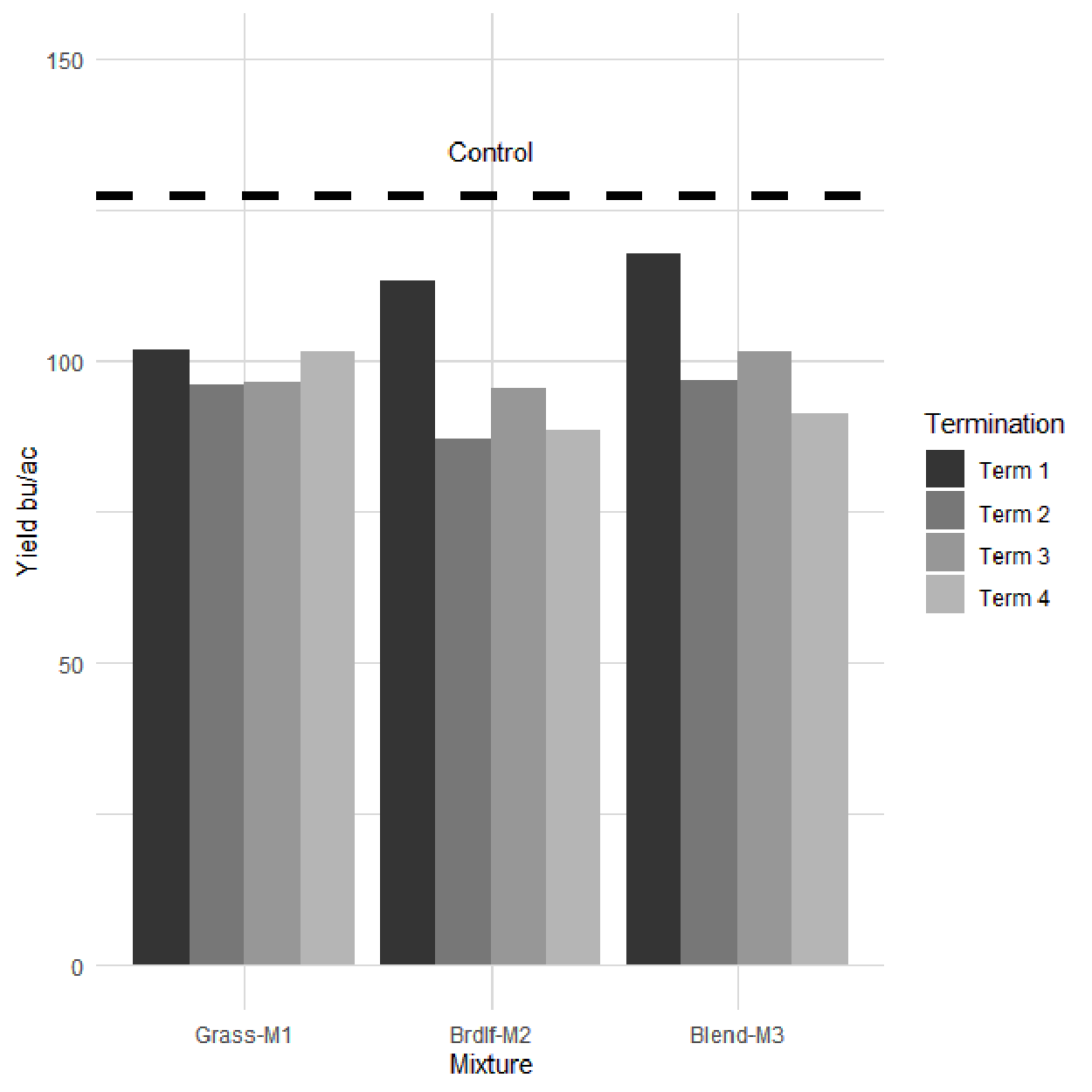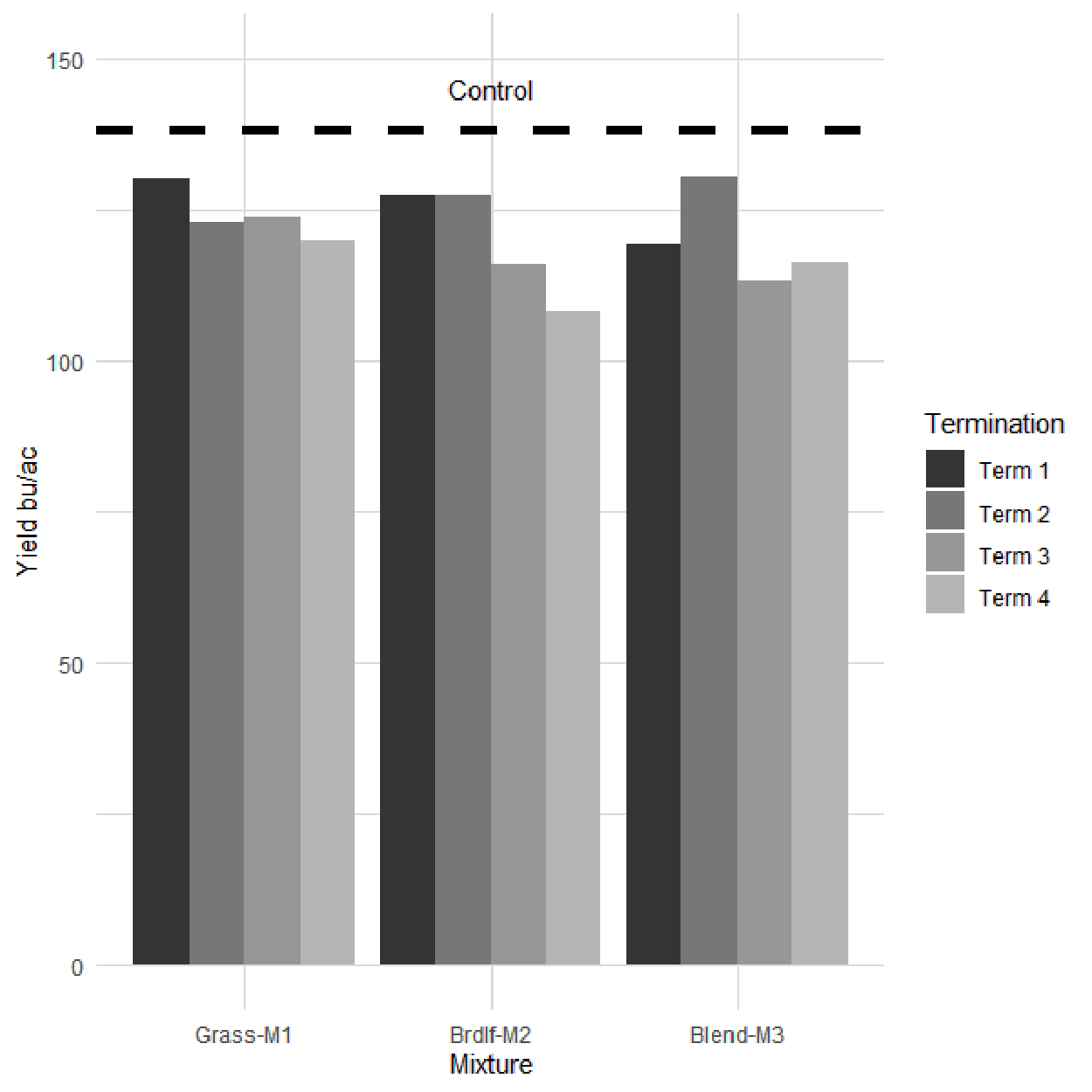
By Sam Ireland
In South Dakota, the fallow period between wheat harvest (July) and corn planting (the following April and May) presents an opportunity for cover crops. The state’s limited growing season restricts late-fall and winter plant growth, which narrows this cover crop window. To address this climatic constraint, the cover crop should be seeded as soon as the wheat crop has been harvested. Biomass production will typically decrease as more time passes between wheat harvest and cover crops being planted. If a producer decides to wait for additional moisture to arrive before planting, they may be too late. A cover crop failure due to insufficient soil moisture incurs the cost of seeding and moisture used by the cover crop.
There have been contradictory findings with regards to the effect of cover crops on the following cash crop yield. Some studies have shown that cover crops increase the yield of the following cash crop (Blanco-Canqui et al., 2012), while others have observed negative impacts to yield (Reese et al., 2014). Several studies have shown that cover crops do not have a significant impact on following cash crop yields (Henry et al., 2010). One trend that has been documented is the decrease in crop yields following cover crops in drier-than-normal growing seasons (Nielsen and Vigil, 2005). Cover crops have been found to decrease soil moisture and, in some cases, short-change the following cash crop moisture (Kahimba et al., 2008). If limited soil moisture becomes a concern during the cover crop’s lifespan, an option may be to use herbicides to terminate the growing cover crop (Legleiter et al., 2012).
Research in Central South Dakota
Field experiments were conducted in 2019 through 2020 at the Dakota Lakes Research Farm in Pierre, South Dakota and on a producer’s field near Canning, South Dakota. Three different cover crop mixes: Grass-M1 (a grass-dominated blend), Brdlf-M2 (a broadleaf dominated blend), and Blend-M3 (equally weighted by rate of grass and broadleaves) were planted on July 25, 2019 at Dakota Lakes and August 8, 2019 at Canning. A chemical fallow treatment was implemented as a control. Cover crops were terminated with herbicides at different times in the fall of 2019.
Findings
Soil Moisture
Plant available water measured in April 2020 for the 0 to 36 inch soil profile was higher in the control treatments where no cover crop was grown versus the cover-cropped treatments. At Dakota Lakes, the control contained 4.1 inches of plant-available, water while the cover-cropped treatments on average contained 2.1 inches. At Canning, the control contained 3.7 inches of plant-available water, while the cover-cropped treatments on average contained 2.7 inches. Cover crops utilized soil moisture in the fall, while the control treatments were recharging their soil moisture profile.
Soil Nitrate-Nitrogen
Soil nitrate-nitrogen content measured in April 2020 was also higher in the control treatments than cover-cropped treatments. For the 0 to 36 inch soil profile at Dakota Lakes, the control contained 50 pounds of nitrate-nitrogen, while the cover-cropped treatments on average contained 32 pounds of nitrate-nitrogen. At Canning, the control contained 69 pounds of nitrate-nitrogen, while the cover-cropped treatments on average contained 35 pounds of nitrate-nitrogen. Cover crops sequestered nitrate-nitrogen that potentially could have leached from the soil profile. Soil nitrogen variability in the spring was accounted for by applying different rates of nitrogen fertilizer determined by spring soil tests.
Grain Yield
Corn grain yield was higher in the control treatment than most cover-cropped treatments at both locations. It is likely that the reduction in corn grain yield is a function of both reduced soil moisture and nitrogen. Earlier terminated cover crops resulted in a higher yielding corn crop as compared to those terminated last. The cover crops terminated later in the season produced more cover crop biomass but reduced the corn grain yield the following year. Terminating cover crops proved to be an effective practice. This approach saved a portion of the grain yield in the following cash crop, while still accomplishing some of the benefits from cover cropping. Drawbacks of early termination are reduced cover crop biomass production and reduced length of time that a living root is in place.
 Figure 1. Dakota Lakes Research Farm (18 miles east of Pierre, South Dakota) corn grain yield (bushels per acre). Corn harvested on October 1, 2020.
Figure 1. Dakota Lakes Research Farm (18 miles east of Pierre, South Dakota) corn grain yield (bushels per acre). Corn harvested on October 1, 2020.  Figure 2. Canning (central South Dakota) corn grain yield (bushels per acre). Corn harvested on October 9, 2020.
Figure 2. Canning (central South Dakota) corn grain yield (bushels per acre). Corn harvested on October 9, 2020.
The decision to incorporate cover crops into an annual cropping system in central South Dakota must consider historical precipitation (as this is a probability game), water holding capacity of the soil profile and soil moisture at time of cover crop planting. Web soil survey is a resource that provides the water holding capacity of the soil profile (Web Soil Survey, 2020). If a producer decides to plant cover crops and it becomes apparent that a soil moisture deficit will occur, terminating the growing biomass with herbicides can be an effective approach.
Planting cover crops after small grain harvest can be risky in central South Dakota. Utilizing soil moisture and nutrients in the fall may cause yield drags in the following cash crop. If a producer is equipped to harvest cover crops for forage (haying or grazing), the value in feed may offset the economic loss in yield the following year.
References
- Blanco-Canqui, H., Claassen, M. M., & Presley, D. R. (2012). Summer cover crops fix nitrogen, increase crop yield, and improve soil-crop relationships. Agronomy Journal, 104(1), 137–147.
- Henry, D. C., Mullen, R. W., Dygert, C. E., Diedrick, K. A., & Sundermeier, A. (2010). Nitrogen contribution from red clover for corn following wheat in western Ohio. Agronomy Journal, 102(1), 210–215.
- Kahimba, Frederick C., Sri Ranjan, R., Froese, J., Entz, M., & Nason, R. (2008). Cover crop effects on infiltration, soil temperature, and soil moisture distribution in the Canadian prairies. Applied Engineering in Agriculture, 24(3), 321–333.
- Legleiter, T. R., Johnson, B., Jordan, T., & Gibson, K. (2012). Successful Cover Crop Termination with Herbicides Successful Cover Crop Termination with Herbicides. Retrieved 2020.
- Nielsen, D. C., & Vigil, M. F. (2005). Legume green fallow effect on soil water content at wheat planting and wheat yield. Agronomy Journal, 97(3), 684–689.
- Reese, C. L., Clay, D. E., Clay, S. A., Bich, A. D., Kennedy, A. C., Hansen, S. A., & Moriles, J. (2014). Winter cover crops impact on corn production in semiarid regions. Agronomy Journal, 106(4), 1479–1488.
- Web Soil Survey. (2020).